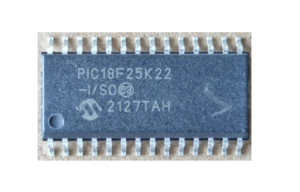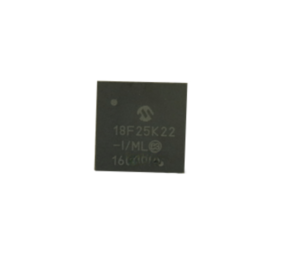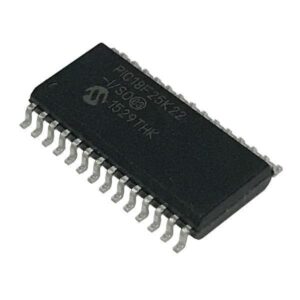 Restoring Microcontroller PIC18F25K22 Memory Heximal
Restoring Microcontroller PIC18F25K22 Memory Heximal
Restoring Microcontroller PIC18F25K22 Memory Heximal from flash after crack mcu pic18f25k22 fuse bit and read embedded firmware from processor.

The Internal Oscillator Frequency Select bits (IRCF<2:0>) select the frequency output of the internal oscillator block. The choices are the LFINTOSC source (31.25 kHz), the MFINTOSC source (31.25 kHz, 250 kHz or 500 kHz) and the HFINTOSC source (16 MHz) or one of the frequencies derived from the HFINTOSC postscaler (31.25 kHz to 8 MHz).

ripristino del microcontrollore protetto PIC18F25K22 del codice esagonale della memoria flash e del file di dati della memoria EEPROM dopo che l’MCU crittografato PIC18F25K22 il pezzo del fusibile di sicurezza dell’MCU ed estrasse il firmware incorporato dal PIC18F25K22 bloccato del microprocessore.
If the internal oscillator block is supplying the main clock, changing the states of these bits will have an immediate change on the internal oscillator’s output to faciliate the process of recovering pic18f24k22 flash memory. On device Resets, the output frequency of the internal oscillator is set to the default frequency of 1 MHz.
When a nominal output frequency of 31.25 kHz is selected (IRCF<2:0> = 000), users may choose which internal oscillator acts as the source. This is done with the INTSRC bit of the OSCTUNE register and MFIOSEL bit of the OSCCON2 register. See Figure 2-2 and Register 2-1 for specific 31.25 kHz selection.

Przywracanie zabezpieczonego kodu szesnastkowego pamięci flash PIC18F25K22 mikrokontrolera i pliku danych pamięci EEPROM po złamaniu zaszyfrowanego MCU PIC18F25K22 bitu bezpiecznika bezpieczeństwa i wyodrębnieniu wbudowanego oprogramowania układowego z zablokowanego PIC18F25K22 mikroprocesora.
This option allows users to select a 31.25 kHz clock (MFINTOSC or HFINTOSC) that can be tuned using the TUN<5:0> bits in OSCTUNE register, while maintaining power savings with a very low clock speed. LFINTOSC always remains the clock source for features such as the Watchdog Timer and the Fail-Safe Clock Monitor, regardless of the setting of INTSRC and MFIOSEL bits This option allows users to select the tunable and more precise HFINTOSC as a clock source when break microchip pic18f25k80 loaded memory, while maintaining power savings with a very low clock speed.
